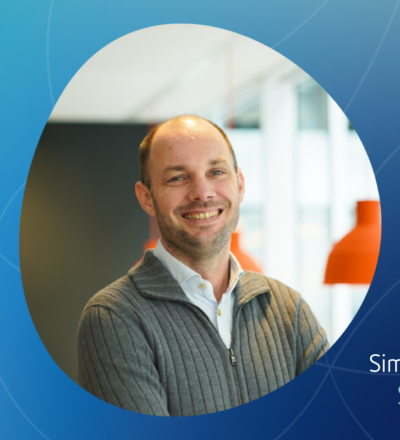Samotics strives to apply artificial intelligence to the ever-growing trove of machine data to detect developing failures earlier to prevent unexpected failure, lower costs, save energy, and raise safety & reliability. Simon Jagers is their CEO.
Name: Simon Jagers
Function: CEO
Organization: Samotics
Works together with ISPT on: ERGO
Why do you think it’s important to contribute to climate goals with your work?
Global warming is the biggest problem of our generation. If we are unable to stop the warming, large parts of the world will become uninhabitable, there will be an unprecedented humanitarian crisis and a destruction of flora and fauna. Our children and grandchildren living in a world less liveable than it is now. We must prevent that at all costs. I want Samotics to be part of the solution.
What problems need to be solved to accelerate?
The financing of the transition remains a problem. According to McKinsey, about 1/3 of sustainable investments have a direct return on investment. The rest only cost money at first. Consequently, companies feel penalized when they invest in the future, as their short-term competitive position becomes worse.
Financial instruments are needed to finance ambitious, risky investments and make projects that contribute to carbon-neutral production attractive. I believe that the government has an important role to play here: On the one hand, by complying with internationally made commitments around the environment and drafting laws and regulations to make companies do the same. On the other hand, we should not be blind to the fact that if we are the best kid in the class in terms of reducing emissions, for example, we are putting our industry in a difficult position compared to other countries. We can avoid this by making compliance with agreements made financially attractive as well.
What do you see as the greatest opportunity for innovations and to meet the goals of the Climate Accord?
According to the Boston Consulting Group, most countries can meet 80% of the Paris Climate Accord goals by using technology already available on a larger scale. There is a lot of focus on innovations that do something completely new. And that remains important because there is still a 20% gap. But we should not overlook the fact that technology only has an impact when it is applied on a large scale. I think there are still a lot of opportunities in this area: “second-order” innovations that focus on making promising technology scalable.
Technology only has an impact when it is applied on a large scale
Simon Jagers – Samotics
Tell us about your collaboration with ISPT
With ISPT and partners like Nobian, Vopak, Vitens, Huntsman, the Copernicus Institute and TPA Advisors, we started a project ERGO: Energy Reduction through Condition-Based Maintenance. As a part of this, we are monitoring the health and energy efficiency of electric motors and rotating equipment, such as pumps and conveyors.
Industrial electric motors use roughly 35% to 40% of all electrical energy. By addressing the main causes of energy loss – which are improperly selected assets that are too large or too small, for example, inefficient use, and condition degradation – we enable 10 to 15% energy savings.
The project is running excellently, and the support from ISPT is great: Content strength colleagues helped set up the project and are now making sure everything is running smoothly. It is also a very pleasant cooperation on a personal level. In short: It is no surprise that ERGO 2.0 is in the pen.
What is your dream goal?
Samotics will still be the leading company within our niche – electrical signature analysis – in 2030. That niche is now exploding: ESA solves costly problems, especially problems around power loss and reliability, in a much more elegant and scalable way than traditional solutions do.
Our global partnerships allow us to roll out faster and faster, to make a bigger impact on performance, reliability, and sustainability. I hope that between now and 2030 we can develop, roll out, and learn with as much enthusiasm as we have over the past 7 years, so that by then we will still be delivering the very best technology. By then, we will be doing so within a field of work that is no longer seen as niche: ESA will then be a standard solution to optimize machine performance, energy consumption, and reliability.
Our partners are of great value for our open innovation platform. In this series we proudly introduce some of them to you with a short interview about collaboration in the energy transition.
Acknowledgement
This project is co-funded by TKI-E&I with the supplementary grant 'TKI- Toeslag' for Topconsortia for Knowledge and Innovation (TKI’s) of the Ministry of Economic Affairs and Climate Policy.
